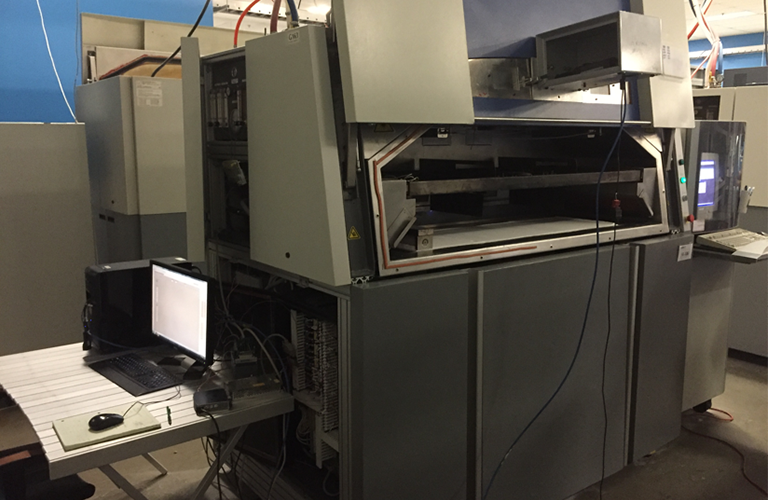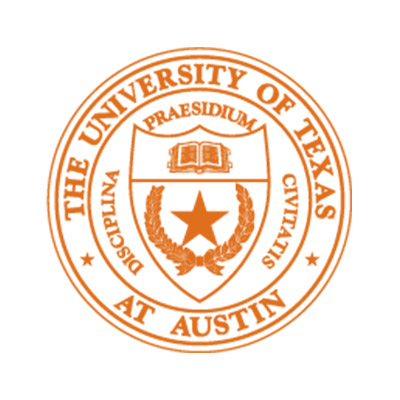


Feedback System Setup – 3D Systems Sinterstation with UT feedback control system located at Stratasys Direct Manufacturing
This project seeks to provide feedback temperature measurements at three critical phases of the powder bed fusion (PBF) process and use these measurements to actively drive the thermal history of the thermoplastic along the trajectory associated with the desired mechanical performance.
Problem
Current thermoplastic PBF machines operate largely in an open loop scripted build process, with the only feedback provided by individual pyrometers reading powder surface temperatures on the feed bin and build surfaces and driving quartz heating lamps to pre-build set points. These systems have little or no way of responding to process transients other than to shut down and scrap the build. Unchecked variations in temperature in the part or powder during the layer spreading process can cause thermal stresses and associated part curl, which could potentially damage the machine. Even in the most carefully monitored equipment, the lack of compensation for temporal and spatial temperature variation across the build surface can have catastrophic results.
Objective
The objective of this project was to examine the potential of more comprehensive feedback control in PBF machines. The University of Texas at Austin (UT) teamed with Harvest Technologies, which later became part of Stratasys Direct Manufacturing (SDM) to address this potential by exploring modifications to a production 3D Systems Sinterstation 2500, incorporating feedback control in the powder pre-heat area, the build surface area, cooldown box, and laser power compensation areas.
Technical Approach
The approach of this project was based on careful measurements of the thermal history of the build material at three critical phases in the PBF process, controlling key process parameters based on these measurements, and producing desirable conditions even when variations or disturbances in the build process were present. This approach was driven by the knowledge that part quality in PBF is closely tied to the optimization of the thermal time history of the material being converted from powder feedstock to finished 3D object. By including feedback control in critical parts of this thermal history, required part properties were optimized and the processes could adapt to disturbances that existing open loop machines cannot compensate for. The feedback control target areas were the powder pre-heat area, the build surface area, cooldown box, and laser power compensation areas.
Accomplishments
The project evaluated several options for in-situ thermally imaging the build surface, with the most viable being a custom adaptation developed around the new (at the time) FLIR LEPTON sensor. The team worked with a local startup (TAHI Company) to integrate the Lepton/feedback controller into the Sinterstation and successfully showed that improved temperature uniformity was achievable. Short builds showed promising results and provided confidence for Stratasys to continue testing and dialog with TAHI after the project was completed.
The team also discovered that enhancing feedback control in the feed bin areas was not effective in changing overall part properties because these properties are so dominated by the build surface activity. It is suspected that improved feed bin thermal uniformity is masked somewhat by the mixing action of the roller in the spreading process.
The team found that cooldown feedback control was not feasible due to the slow thermal response to piston/cylinder heater control due to the low thermal conductivity of the polymer part cake.
Investigation of the initial candidate sensor system (thermal imager through the observation window of the Sinterstation door) led to development of an in-situ laser power meter to allow evaluation of the effects of laser window contamination. The team conducted detailed laser window contamination assessment on multiple machines with SDM, and found that although nitrogen shielding of laser windows (a common practice) reduces the overall contamination rate, it can create a more nonuniform laser window contamination pattern.
Project Participants
Project Principal

Other Project Participants
- Stratasys Direct Manufacturing
- Boeing
- Integra Inc.
Public Participants
- U.S. Department of Defense
- National Science Foundation
- U.S. Department of Energy
